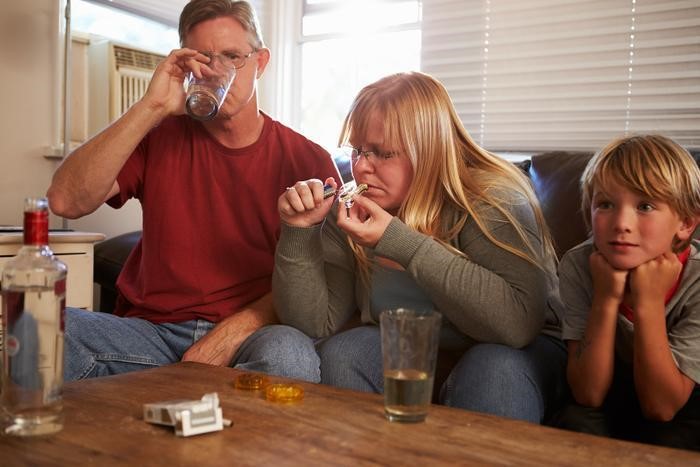The image of the laid-back chilled pot smoker is deceptive. The mellowing effects of cannabis seem unsuited to promoting violent behaviour. However, research has linked marijuana use to increased violent behaviour. A certain percentage of people who use marijuana can become psychotic and violent.
A large study just published by a team from Montreal University in Canada has found that people who regularly smoke cannabis are almost three times more likely to commit a violent offence as those who abstain from the drug. The paper entitled “Association Between the Use of Cannabis and Physical Violence in Youths: A Meta-Analytical Investigation” and published in the American Psychiatric Association’s (APA) American Journal of Psychiatry did a meta-analysis of 30 studies which covered 296,815 people up to the age of 30. The study found that over time, prolonged cannabis use profoundly alters the brain, making the user less able to control their temper, and that addicts may also suffer from withdrawal symptoms, making them irritable and prone to lashing out. Psychiatrist Professor Sir Robin Murray, a world-leading expert on the neurological impact of the drug, was quoted in the media saying that the link between cannabis use and violence was a ‘neglected area’. The researchers say that while ‘the [scientific] literature has shown that cannabis use may lead to violent behaviours and aggression; however, this association has been inconsistent’ – with some studies showing a relationship and others not – their meta-analysis found users were more than twice as likely (2.15 times) to have committed a violent offence as non-users. Among ‘persistent heavy users’, the risk of violence was 2.81 times higher.
In 2018, researchers at Ohio and Tennessee Universities found that marijuana use was positively and significantly associated with psychological, physical, and sexual intimate partner violence, after controlling for alcohol use and problems, antisocial personality symptoms, and relationship satisfaction. The researchers say that treatment of men arrested for domestic violence should consider reducing their marijuana use.
NEW ZEALAND CASE: Father jailed after ramming bottle into baby’s mouth, causing head injuries – May 2020
“Indications are it is highly likely he will have significant brain damage with associated effects on his sight, hearing and physical development,” court documents state. “Smoking cannabis was a regular factor in Jacob losing control and letting anger and frustration take over, according to the pre-sentence report“
Man, high on pot candy (edibles), gets 30 years prison for killing wife – April 2017
READ a personal testimony – Marijuana and Domestic Violence
A University of Florida study published in The Journal of Interpersonal Violence in 2011 found that frequent marijuana users in adolescence are twice as likely to engage in domestic violence as young adults. The same study showed this group were more than twice as likely to become a victim of domestic violence. The researchers said “These findings have implications for intimate partner violence prevention efforts, as marijuana use should be considered as a target of early intimate partner violence intervention and treatment programming.”
Source: https://www.pikdo.me/media/BJWGVM5BRTk
Research published in 2016 in the journal Psychological Medicine concluded that continued use of cannabis causes violent behaviour as a direct result of changes in brain function that are caused by smoking weed over many years. The results showed that continued cannabis use is associated with 7-fold greater odds for subsequent commission of violent crimes.
In Canada in 2019, cannabis-induced psychosis spurred the brutal death (stabbing and beheading) of John Kehl, 67, by his then 31-year-old son Adam.
The evidence is already appearing in New Zealand. Just this year, a man who stalked several women during a 24-hour drug-induced psychosis has left one of his victims with ”a lasting fear”. He lost his job after failing a drug test and then embarked on a four-day cannabis binge. The judge said that resulted in a psychosis. Last year, a man repaid a family who had taken him in by stabbing the mother, a babysitter and their pet dog in a drug-induced rage. The judge said that his consumption of cannabis, which may have been laced unknowingly with methamphetamine, had caused him to attack.
In 2019, 30-year-old Zachary Bruce Middlemiss attacked his pregnant partner three times in her first trimester and was jailed for nearly three years. The court was told that Middlemiss’ errant behaviour was the result of a raging drug addiction which had him taking opioids four times a week and cannabis daily.
CHILD ABUSE
We know from a number of governmental reports (UNICEF reports in 2003 and 2007, a CYF report in 2006, and a Children’s Commissioner report in 2009) that one of the factors most commonly associated with the maltreatment of children is drug abuse.
It raises an important question – is our relatively higher use of cannabis compared to other countries related to our horrific record when it comes to child abuse and family violence?
In Dunedin this year, Garry Bingle lay in his kitchen in a drug-induced stupor as his two toddlers played by the red-hot element he had used to spot cannabis. It was just one incident in a catalogue of neglect and abuse over a number of years. Judge Kevin Phillips condemned the defendant’s behaviour and jailed him for two years. “The children were defenceless, very young children, children of your blood, children who depended upon you for care, for nurture and for love, and they got seriously abused, physically assaulted and left in danger, because you were more intent on pursuing your addiction than caring for your children.”
An Auckland father who was dealing cannabis shot his 2-year-old daughter at close range with a shotgun. The shotgun was at his Māngere house as “protection against being ripped off” by other drug dealers or consumers. He was found guilty of manslaughter.
A couple spent the majority of their household income on drugs, leaving their two children with little food in a home sometimes without electricity, the New Plymouth District Court was told. “There had been a lack of food in the house for long periods, the prepaid electricity in the home often ran out and the defendants had been using cannabis and its synthetic equivalent. The children were aware and disclosed that the majority of their household money was spent on drugs rather than on food for the family.”
In December 2019, 26-year-old Nicho Caleb Fraser, had a long history of family violence before he fatally threw eight-month-old Bella Richardson. Frater had 39 previous convictions and had served multiple jail terms. Ten of those convictions were for family violence, including assault with a weapon and threatening to kill in 2016, but none for harm against children. He started using drugs from 18, and was taking cannabis almost daily at the time of Bella’s death, the judge said.
 In March, Texas released its report on child abuse deaths, finding half the 172 child abuse deaths in 2017 coupled with substance abuse. Marijuana was the most-used substance connected to child abuse and neglect deaths, followed by alcohol, cocaine and methamphetamine. In one terrible case last year, Cynthia Randolph left her 1-year old and 2-year-old in the car while she smoked pot. Both children died.
In March, Texas released its report on child abuse deaths, finding half the 172 child abuse deaths in 2017 coupled with substance abuse. Marijuana was the most-used substance connected to child abuse and neglect deaths, followed by alcohol, cocaine and methamphetamine. In one terrible case last year, Cynthia Randolph left her 1-year old and 2-year-old in the car while she smoked pot. Both children died.
In 2017, Arizona also published a report showing that marijuana was the substance most often linked to child abuse deaths in 2016.
In a disturbing case from Australia just last year, a 40-year-old’s descent into “schizophrenia at its very depths”, likely exacerbated by years of heavy cannabis use, culminated in her being in a psychotic state when she killed eight children under the age of 15.
In California, 16-month-old Harley and 2-year-old brother Jason died after they were found lying facedown in a pool in 2013. Their mother drove them to a local firehouse instead of calling 911 to allegedly hide a small marijuana farm at the home. The medical examiner’s report found that Behrens was asleep inside the home when her son tried to wake the woman up because he couldn’t find his sister. But the mother went back to sleep and found both her children in the pool, which was dirty and in disrepair.
A Texas man fatally stabbed his 16-month-old son, yelling “Jesus is coming,” in Lewisville, outside of Dallas. Police say they found “fresh burnt marijuana as well as a haze of smoke in the apartment,” and blood in multiple areas of the apartment. The man told police, “I know everyone’s mad, I’m mad. I killed my son.” And a Texas mother left her two daughters to die in a 48 degree car while she smoked marijuana and partied with friends.
In Vermont last year, a father – in the midst of psychosis — jumped four stories with his 6-year-old son. Anxious and suicidal, Tyler Denning had been smoking marijuana that morning, and claimed that God made him do it.
(BAD) EXAMPLE TO CHILDREN
 When mothers use marijuana during the first 12 years of their child’s life, their cannabis-using children are more likely to start at an earlier age than children of non-using mothers, according to a new study from the Harvard T.H. Chan School of Public Health published in the American Journal of Preventive Medicine in September. This study is the first to establish a relationship between maternal cannabis use during a child’s lifetime and earlier initiation in a nationally-representative, longitudinal cohort.
When mothers use marijuana during the first 12 years of their child’s life, their cannabis-using children are more likely to start at an earlier age than children of non-using mothers, according to a new study from the Harvard T.H. Chan School of Public Health published in the American Journal of Preventive Medicine in September. This study is the first to establish a relationship between maternal cannabis use during a child’s lifetime and earlier initiation in a nationally-representative, longitudinal cohort.
Concerns are also present in New Zealand. In September 2018, a judge asked that a couple convicted of growing a large amount of cannabis in the family home be investigated by country’s child welfare agency… In the downstairs basement, a 16 metre square growing tent was found, which contained 26 plant seedlings and one mature plant. Equipment, including lamps and fans used to assist in the growing process, had also been set up… At the hearing, the judge raised concerns about the couple’s children being exposed to drug use.

